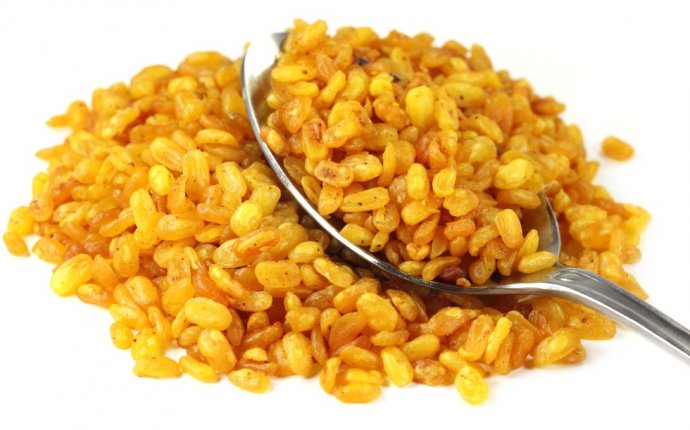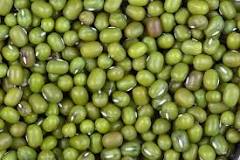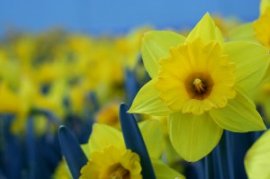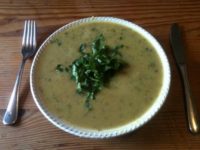
Moong Dal Ayurveda

For a deep cleanse to the body, you can try a mono diet of mung bean soup for an ideal Spring cleanse.
If you want to cleanse periodically, then Ayurveda consider it is most beneficial to do so at the joint between two seasons: especially when winter becomes spring and when late summer turns into autumn.
Mung beans are available from health food shops, Indian grocers and sometimes supermarkets. Try and get organic if you can and buy in bulk to reduce costs (though you will save money on this diet, as well as time normally spend preparing food!) They come in whole green variety, split green or split yellow. The whole green is most nutritious and is recommended for this cleanse. For more on their nutritional benefits see this summary here.
The soup recipe is highly nutritious and naturally detoxifies the body. It works by cleansing the liver, gall bladder and vascular system of any ama (undigested toxins). If you follow it for a few days you will lose weight, as well as any retained water and feel lighter, clearer and much more energised- but you need to have a little willpower initially, though it does tend to get easier day by day.
As this is a powerful detoxification process, pick a time when you are not very busy, and can be less sociable if you feel like it. You can do this diet for anything from one to 7 days, or longer if desired and you are feeling the benefits. Just try it for one day if you are not sure- and carry on if it feels ok. You could try one day a week, one weekend a month or go for the full 7-10 days to really cleanse the system. Eat a bowl of this detoxifying soup for breakfast, lunch and dinner but only eat when there is genuine hunger and the previous meal has been completely digested. You will be nourished but will also burn lots of undigested matter (ama).
 If your regular diet includes refined sugar, caffeine, fast food, additives, flavourings, alcohol and wheat, you are likely to feel cravings for these foods during the first few days. Such cravings may also be accompanied by strong feelings of resistance towards mung. This is normal during a withdrawal from these addictive substances, so try to observe rather than react to it. Be assured that the sensations gradually subside as toxins get flushed out of your system. Some people also experience complete absence of their usual craving for sugar, because their tissues receive the nourishment they require and are ‘satisfied’. This can be a surprising and very empowering experience. However, some people do feel a little ropey, even like they are getting flu, but just keep going at this stage and you will feel brilliant after!
If your regular diet includes refined sugar, caffeine, fast food, additives, flavourings, alcohol and wheat, you are likely to feel cravings for these foods during the first few days. Such cravings may also be accompanied by strong feelings of resistance towards mung. This is normal during a withdrawal from these addictive substances, so try to observe rather than react to it. Be assured that the sensations gradually subside as toxins get flushed out of your system. Some people also experience complete absence of their usual craving for sugar, because their tissues receive the nourishment they require and are ‘satisfied’. This can be a surprising and very empowering experience. However, some people do feel a little ropey, even like they are getting flu, but just keep going at this stage and you will feel brilliant after!
NB: Please do not do this fast if you are pregnant, breast feeding, or suffering from a long-term chronic illness without consulting me or another Ayurvedic practitioner first.
The benefits of a mono-diet of such a light and easily digestible food include:
• Cleansing the body of toxins and residues (including heavy metals) by cleaning all the body’s subtle channels
• Corrects digestive fire, at the heart of Ayurvedic health and healing (or agni)
• Sharpening the mind, providing tranquillity, energy and vitality
• Promoting weight loss, reducing swelling and water retention
Some tips for your Ayurvedic cleanse:
- To help loosen deep seated toxins, Ayurveda recommends drinking one or two teaspoons of ghee dissolved in hot water in the early morning on an empty stomach. If you are Vata type, add a pinch of Himalayan rock salt, Pitta types should just have plain ghee, and Kapha types a pinch of ginger. This will help the process but you can also do the diet without this- its so simple.
- Throughout the rest of the day eat only mung bean soup and nothing else! You can eat as much as you need to satisfy your appetite, and once the previous meal has been digested. This means leaving 3-4 hours in between each meal, waiting for genuine hunger to appear (not boredom!)
- Make up a fresh batch for each day, re heating only as much as you need for each meal so the meal is as full of prana (energy) as possible.
 For work and eating out, I find a food thermos works very well if you don’t have a kitchen at work. Buy a large one and you can even fit 3 meals in it for busy days. Try not to use a microwave- click for an earlier post on microwaves.
For work and eating out, I find a food thermos works very well if you don’t have a kitchen at work. Buy a large one and you can even fit 3 meals in it for busy days. Try not to use a microwave- click for an earlier post on microwaves. - If you feel like a little variety, you can also add green leafy vegetables (spinach, chard, kale), pumpkin or courgettes to the mung soup, or make a completely vegetable soup and have this for one of the meals per day.
- Drink warm water and lots of herbal teas, fresh ginger tea with a squeeze of lemon, and rest and relax as much as you can. The simple fasting tea below is also very helpful during this cleanse.
- If you are feeling weak or very hungry you can eat a little brown or white rice with the soup (well cooked) at lunch time, or even an emergency rice cake if you are on the go.
- If you are close to breaking the cleanse and need something sweet, have a spoonful of raw honey and enjoy!
Mung bean soup recipe (makes 2-3 bowls so double up as needed)
- 100g green mung beans
- 1 litre water
- ½- 1tsp tsp. turmeric powder
- 1 pinch asafoetida or Hing (from Indian stores, health shops or large supermarkets
- 1-2 tsps of fresh root ginger
- 3/4 tsp each of cumin seeds, ground coriander, garam masala, ground fennel as per your liking
- Lemon juice
- Ghee or coconut oil (See Recipes page)
- rock salt or herb salt and pepper
- Fresh coriander or other green herbs
Wash the mung beans thoroughly and soak over night or for at least four hours. Add them to a pan with the water with the water and turmeric and simmer gently until soft (around 30-40 minutes), adding more water if needed. Once cooked, heat the ghee or coconut oil in a small frying pan and fry the cumin seeds, hing and ginger until aromatic. Add the remaining spices and heat for 20 seconds or so and then stir them into the soup. Now add salt to taste (don’t add salt in the beginning, as this makes the beans tougher and they therefore take longer to cook!) Serve warm with a good squeeze of lemon juice, and some fresh coriander leaves, finely chopped and stirred into the soup. If you feel like a little variety, you can also add green leafy vegetables (chard, kale, spinach etc), courgettes, grated carrots or pumpkin. Get creative according to what is in season. I also like to blend the soup for a better consistency and flavour. For variety, you can also gentle fry some onions and garlic to add a little sweetness to the soup and change the taste if you are doing a longer cleanse.
A Simple Fasting Tea
Throughout the cleanse, the following tea can be drunk during the day. It keeps the body strong, prevents dosha disturbances, rectifies agni and also helps digest and eliminate toxins. Ensure you drink regularly throughout the day, but avoid drinking excessively. Listen to your body and drink according to its needs. To make the fasting tea, use the following ingredients:
- 1 tsp. cumin seeds
- 1 tsp. coriander seeds
- 1 tsp. fennel seeds
- 1 tsp. fresh root ginger juice
- 3 cardamom (discard the pods and grind the seeds)
Mix everything and gently heat in a pan. Remove from the heat just before it boils and leave to steep for a further 10 minutes. Filter and drink or keep warm in a flask to consume throughout the day.














